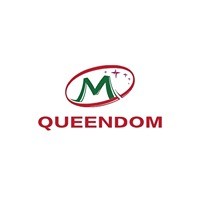380nm UV light, a part of the ultraviolet (UV) spectrum, has gained significant attention in various industries due to its unique properties and applications. This article delves into the world of 380nm UV light, exploring its characteristics, uses, and the industries that benefit from its capabilities.
Introduction to UV Light
Ultraviolet light is a form of electromagnetic radiation that has wavelengths shorter than visible light but longer than X-rays. The UV spectrum is divided into three categories: UVA, UVB, and UVC, with UVC having the shortest wavelengths, ranging from 100 to 280 nanometers (nm). Among these, 380nm UV light falls within the UVC range, making it a powerful tool for sterilization and other applications.
Characteristics of 380nm UV Light
380nm UV light is known for its high energy and ability to penetrate various materials. This type of light has several distinct characteristics that make it valuable in different industries:
- High Energy: The short wavelength of 380nm UV light means it carries a high amount of energy, which is useful for breaking down chemical bonds and sterilizing surfaces.
- Penetration: Unlike longer wavelengths of UV light, 380nm UV light can penetrate some materials, such as plastics and certain types of glass, allowing for sterilization in environments that might be difficult to reach with other UV sources.
- Non-Thermal: 380nm UV light is non-thermal, meaning it does not generate heat during the sterilization process, which is advantageous for sensitive materials and equipment.
Applications in Industry
The unique properties of 380nm UV light make it a versatile tool across various industries. Here are some of the primary applications:
Healthcare
In healthcare, 380nm UV light is used for sterilization purposes. It is effective against a wide range of pathogens, including bacteria, viruses, and fungi. This makes it particularly useful in hospitals, clinics, and laboratories where maintaining a sterile environment is critical. 380nm UV light can be used to disinfect medical equipment, surgical instruments, and even the air in operating rooms.
Water Treatment
Water treatment facilities utilize 380nm UV light to purify water by destroying harmful microorganisms such as bacteria, viruses, and protozoa. This method is considered a safe and environmentally friendly alternative to chemical disinfection, as it does not leave any residual chemicals in the water.
Food Processing
The food industry employs 380nm UV light to sterilize packaging materials and food surfaces. This process is known as UV-C surface treatment and can help reduce the risk of foodborne illnesses. Additionally, UV light can be used to extend the shelf life of products by inhibiting the growth of bacteria and molds.
Waste Water Treatment
380nm UV light is also used in wastewater treatment plants to eliminate pathogens from the water before it is released back into the environment. This helps to protect aquatic ecosystems and maintain water quality.
Technological Advancements
The use of 380nm UV light has been facilitated by technological advancements in UV light sources and systems. Some of the key developments include:
- LED Technology: Light Emitting Diode (LED) technology has made it possible to produce UV light sources that are more energy-efficient, compact, and cost-effective compared to traditional mercury vapor lamps.
- Optimized Systems: Innovations in UV light systems have allowed for more precise and efficient delivery of the light, ensuring that the sterilization process is effective and reliable.
Challenges and Considerations
Despite the many benefits of 380nm UV light, there are challenges and considerations to keep in mind:
- Safety: Proper safety measures must be in place when using 380nm UV light, as it can cause skin and eye damage if not handled correctly.
- Effectiveness: The effectiveness of 380nm UV light can be affected by factors such as the presence of haze, water quality, and the type of material being sterilized.
- Regulatory Compliance: Different industries have specific regulations and guidelines regarding the use of UV light for sterilization, which must be adhered to.
Conclusion
380nm UV light has become an essential tool in numerous industries due to its ability to sterilize surfaces, purify water, and treat waste. As technology continues to advance, the use of 380nm UV light is expected to expand, offering even more solutions to various challenges. By understanding its properties and applications, industries can harness the power of 380nm UV light to improve safety, efficiency, and sustainability.
 English
English china
china German
German Spanish
Spanish French
French Italian
Italian Portuguese
Portuguese Japanese
Japanese Korean
Korean Arabic
Arabic Russian
Russian
 Mobile Site
Mobile Site
 +86-0769-81305858
+86-0769-81305858